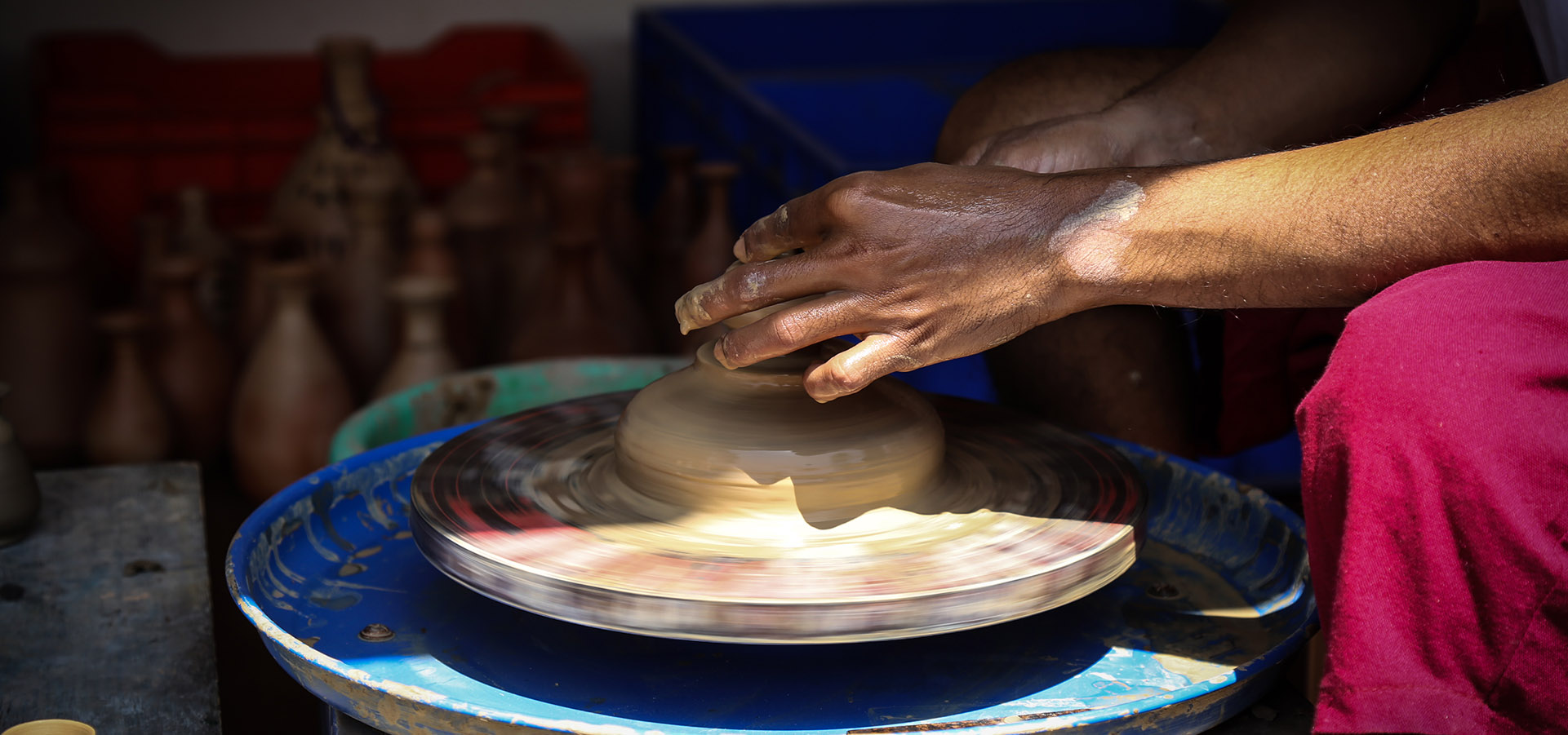FROM THE CURATOR'S DESK

AJEY DALVI
(Artist) Teacher,Dalvi’s Art Institute, Kolhapur
Role of contemporary ‘Indian’ designers
Today we can easily say that it's very tough to deny the entrenching impact of western imperialism on our country and its culture. It is significantly noticed in architecture, clothing, literature, fine art, cuisine...etc.
The Indian culture which is absolutely rich, diverse, deeply meaningful, spiritual and beautiful has been wiped out dramatically! According to Scientific studies, European influence has affected the way of living too. After minutely monitoring the paintings done by Indian master painters from the last two centuries, a study reveals that the British, Portuguese and French colonisers employed their architecture, construction techniques and methods while building their colonies here. Architects from Europe lead the effort but the actual construction was done using locally available materials and local artisans. For e.g. we live in the subcontinent where there is harsh equatorial sunlight, where shades are more important for rest but even now we see gardens built around thart replicate the vast open lawned gardens of Europe where getting sun’s heat is the major requirement. Similarly Japan, when it conquered Chinese territory consciously forced its style and organization of architecture and design through military and in turn forced an outside nationalism. Even in agriculture, we are losing the extreme nutria-beneficial variety of crops and trees. They are on a verge of extinction because we are busy growing no local hybrid/foreign, non-endemic crops. Same is the case with food; India is rich with all special spices and their diverse qualities which provide unique super tasty food in our tradition. But our cuisine is unwittingly labeled as inferior by us, Americans and Europeans. Western food with difficult names or even a roadside Chinese food stall with fake dragon symbols are overpowering the food culture. Recently some of our friends were shown all kinds of fanciful, beautiful and well-crafted Chinese toys at a Dubai mall. When asked for more durable items they were shown Indian toys. When our friends searched for the same toys on return to India, to their surprise they could not find those here. This is an eye-opening experience.
The maximum of our society today is engulfed by the western style of clothing to such an extent that it is becoming difficult day by day to even remember or to perceive what type of clothes were used by our ancestors. Everything Vernacular and traditional clothing is ridiculed as out-dated and out fashioned. Indian regional clothes are reduced to extreme occasional clothes and caricatured clothing for fancy dress parades. A lungi from the south, Dhoti, and the Muslim attire deserves praise for preserving the tradition.
Recently a house in Akluj in Solapur district, a very dry hot and arid region was fashioned after some European prototype that is designed for heavy snowfall. It looked out of place, aesthetically hollow and ironically laughable because it was not in a harmony with the atmosphere. It looked like a man wearing reindeer fur attire complete with a leather cap and boots roaming around in a desert.
In the field of fine arts, there is a deep influence of the British tradition. Bengal and Bombay schools were impacted heavily. The Craft was taught through not just observation and copying of Greco-roman classical sculptures but also through references to the aesthetical philosophies of Kant, Aristotle, and Plato. Direct influence of both the thought process and the visual aspects of the European art examples and the teachers who propagated it, is understandable but still, Indian artists passing out of the two schools are seen rejecting the tendency of replication of the classical conventions of Greco-roman human form with all its attributes of skin tones, muscle structures, and proportions. Instead, they were representing the reality of the Indian subcontinent. And regrettably, we do see those same conventions of anglicised human form today in contemporary art driven market. The concept of so-called beauty is visible in the casting of actors in the films, a medium that reaches the collective consciousness of the masses. Art can certainly shape the aesthetic sensibilities of the society about a certain personality but such influence shaping an individual passing through the transition of childhood to adolescence can cause the fall of that brown to dark tan-skinned Indian generation to such low levels where the external makeup of mobiles, gadgets, clothing becomes not just necessity but an obsession.
Our childhood was spent in the mud-plastered brick and breathable stony homes of our ancestors, the calm of those deep shadowed spaces were so potent as compared to these the hollow concrete boxes and all the glossy materials. This, in turn, has influenced society's thinking that anything foreign is good & anything Indian (thought) comes with a level of guilt. The thought fixed in mind that Indian products are outdated is not true.
Indian people for long have been dependent on everything ‘imported’ because of long foreign rule or political, educational or cultural pressures. But the truth is India always led the world in many fields such as arts, crafts, Ayurveda and science, medicines, yoga, farming, astronomy, etc. And again everything ‘Indian’ is making its mark. Now is the time to take special care to make everything look ‘Indian’ where contemporary art andartists can play a major role...in creating it. Things we use every day, clothing, the spaces and places we use, if these are made and shaped with what is rooted in the place, what is within that environment then that will impart the perfect beauty continuum between the environment and us. We should experience and exploit this connection. Though globalization is at its peak now, the Art, literature, and culture can shape societal needs with substantial results. The artists and designers can sensitively give an Indian identity to all emotions, expressions and design details to contemporary Indian products.
Finally, after many decades we have started realising that unknowingly and at times knowingly we started copying the outsiders and ignoring our own culture Art Lifestyles Food, etc. whereas those things are not suitable for us. Everything Indian was ignored.
Now our new generation is challenging the trend. They want to make a comparison between the two with a reference to local conditions, such as climatic or height of users (Indians against Europeans) & our eating habits.
The design of products is challenged with relevance to local conditions.
Such a thought process needs to be encouraged so that products carry a proud Indian influence across the world.

